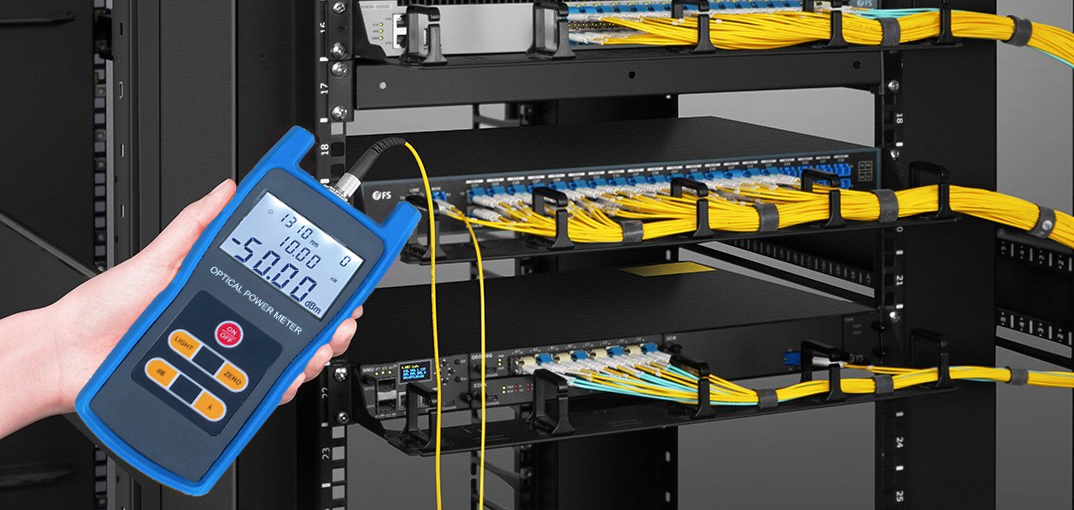Robotic vision enables optimizing manufacturing and quality control.
Wiki Article
The Duty of Optical Fibre Screening in Ensuring High Quality and Performance in Connectivity Solutions
In today's rapidly progressing digital landscape, the significance of optical fiber screening can not be overemphasized, as it offers as a keystone for guaranteeing the quality and effectiveness of connectivity solutions. As modern technology continues to advance, the future of optical fibre testing postures fascinating difficulties and chances that merit closer examination.Value of Optical Fiber Screening
The importance of optical fiber testing can not be overemphasized in ensuring the integrity and efficiency of communication networks. As the foundation of contemporary telecoms, optical fibres help with high-speed information transmission, making their dependability crucial to functional success. Checking functions as an aggressive step to identify possible issues such as signal loss, attenuation, and physical damage, which can endanger network performance.Routine testing allows for the verification of installment quality and the discovery of defects that might impact information stability - optical fibre diameter analyser. By using extensive screening protocols, network operators can mitigate the dangers related to network failures, consisting of downtime and monetary losses. Optical fibre testing makes sure conformity with industry criteria and guidelines, improving the general quality of solution given to end-users.
Eventually, the methodical assessment of optical fibres contributes to the long life and effectiveness of interaction systems. It enables stakeholders to make informed decisions regarding upkeep, upgrades, and troubleshooting. In a landscape where information is increasingly vital, prioritizing optical fiber screening is essential to maintaining durable and efficient connectivity solutions, consequently sustaining the demands of contemporary digital atmospheres.
Sorts Of Optical Fibre Tests
Various screening methods are utilized to ensure the functionality and integrity of optical fibres within interaction networks. These examinations can be broadly classified right into two main kinds: installation examinations and upkeep tests.Installation tests are performed immediately after the setup of optical fiber wires to validate their efficiency and integrity - ofda. One of the most common installment examinations include Optical Time-Domain Reflectometry (OTDR) examinations, which evaluate the quality of the fibre by identifying faults or breaks, and end-to-end loss examinations, which measure the complete optical loss from one end of the fibre to the other
Upkeep examinations, on the other hand, are executed periodically to ensure recurring efficiency and discover possible problems over time. These consist of aesthetic evaluation, which checks for physical problems or incorrect installations, and connection examinations, which verify that the signal can go through the fiber without disturbance.
Additionally, advanced examinations such as Polarization Mode Diffusion (PMD) and Chromatic Diffusion (CD) examinations can be carried out to evaluate the fiber's performance under various conditions. By employing these diverse screening techniques, specialists can keep high criteria of top quality and integrity in optical fibre networks.
Benefits of Regular Examining
Normal testing of optical fibers plays a critical function in preserving the overall performance and dependability of interaction networks. By conducting routine analyses, organizations can ensure that their fibre optic installments meet industry criteria and run successfully. This positive method assists to recognize prospective weak points and deterioration gradually, allowing for timely interventions before problems rise.
Cost-effectiveness is an additional advantage. By addressing small issues early, companies can prevent the high prices related to major fixings or system failures. Normal testing additionally promotes compliance with regulative requirements, making sure that the network sticks to essential safety and efficiency standards.
Typical Concerns Determined
Identifying typical concerns in optical fibre networks is necessary for maintaining ideal efficiency and reliability. Numerous elements can contribute to disruptions, consisting of physical damage, inadequate installation methods, and ecological influences.Physical damages, such as bends, breaks, or abrasions, can significantly break down signal top quality. Improper setup strategies, including excessive stress or inadequate protecting of wires, may result in boosted depletion and loss of connection. Additionally, environmental aspects such as temperature level changes, dampness access, and rodent interference can endanger the honesty of the fibre.
Connector problems likewise regularly emerge, with improper alignment or contamination resulting in boosted insertion loss. In addition, splicing mistakes can present substantial signal degradation if not executed with precision.

Dealing with these common problems through routine optical fiber screening not just improves network reliability yet also enhances general efficiency, ensuring that connectivity services remain durable and efficient.
Future Fads in Examining
As the need for high-speed connectivity proceeds to increase, the future of optical fiber testing will increasingly concentrate on automation and advanced analytics. The assimilation of synthetic knowledge (AI) and maker knowing (ML) in screening processes will certainly enable a lot more efficient information evaluation and predictive upkeep, decreasing downtime and boosting overall network dependability. Automated testing services will certainly improve the assessment and certification of fibre networks, decreasing human error and raising testing throughput.One more considerable pattern is the adoption of remote testing technologies. As the implementation of fibre networks expands into remote and underserved locations, remote testing capacities will enable specialists to keep an eye on and detect network conditions without physical existence, therefore minimizing operational expenses and improving response times.
Furthermore, there will be a shift in the direction of even more detailed screening criteria that include not just typical loss measurements however also efficiency metrics such as latency and data transfer usage. This holistic approach will certainly assist in much better network management and optimization approaches.
As these patterns develop, the optical fiber testing landscape will not just improve the quality and performance of connectivity solutions yet likewise sustain the growing complexities of contemporary communication networks.
Verdict
In conclusion, optical fibre screening offers as an essential element in keeping the honesty and efficiency of communication networks. The ongoing commitment to normal screening not just enhances data transmission however likewise lines up with market criteria, promoting dependability in network facilities.Report this wiki page